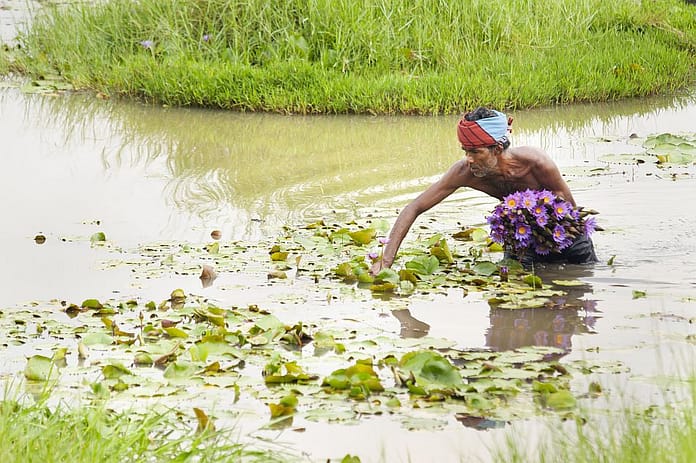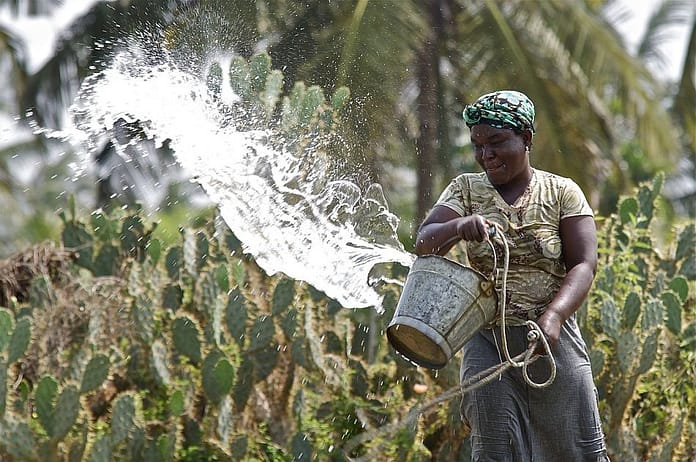By William Rex, Senior Advisor, IWMI
The first blog in this series ended by noting:
“The finite nature of water resources is a key driver of the need for improved water resource management but is relatively intuitive: scarce public goods require effective management. But there are other aspects of water resource management that become less intuitive, particularly in comparison to land, forestry, or other types of landscape management. The problem is that water moves, and actions at one time or place affect water in another. This is a problem that we will discuss in the next part of this blog.”

Imagine managing a forest and discovering that if someone cuts down their trees 1,000 km away, your trees disappear too. You’d either give up on your forest or decide that you need to not only focus on what you do with your trees, but how to cooperate with multiple other stakeholders in multiple other places. Welcome to the world of water resource management.
The fact that water moves is obvious, but the ramifications of this are worth exploring further. As a starting point, water is part of a huge system that is dispersed in terms of place but also in terms of time – it never stands still. And any attempt to manage it needs to take into account this simple fact – water needs to be managed as a system. Let’s unpack that:
- Water needs to be managed in river basins. Rainfall, snow, and other precipitation ends up flowing into rivers defined by a watershed, or into groundwater aquifers with their own boundaries. The watershed defines the boundaries of a surface hydrological system – a river basin – which is connected. Since water moves through this hydrological system, it generally makes sense to try and manage, or at the very least understand, the system as a whole, which is why hydrologists talk about river basin management (more on that later).
- Upstream actions have downstream ramifications. Increased water consumption upstream means less water downstream. Even if thousands of kilometers apart, and several months later. For example, significant expansion of forests or agriculture in one part of a basin impacts on power production at a downstream hydropower facility, or water availability for cities – or vice versa. This highlights the key risk of not managing water as a hydrological system – uncoordinated exploitation of water can create significant trade-offs or unanticipated consequences elsewhere in the system.
- Surface and groundwater are often linked. Significant changes to surface watersheds impact on groundwater (they may accelerate or reduce percolation of water from the surface to underground), and significant extraction of groundwater may reduce downstream surface water (because groundwater may emerge at the surface through springs or other flows). Since they are usually connected systems, the ‘conjunctive’ or coordinated management of surface and groundwater is important for sustainable management of water resources. However, they often don’t share the same boundaries, nor get managed by the same people, in either the same space or time.
- Land-use change = water resource change. Land use directly influences the amount of water retained in soil and vegetation. For example, the type of soil cover influences how rapidly water may be evaporated, while vegetation controls what may be intercepted or transpired back into the atmosphere, or what proportion of rainfall runs off into rivers, is retained as soil moisture, or percolates through to groundwater. Changes in land-use will therefore impact water availability in the basin, and the devil will be in the details. This means that, for example, land restoration measures are not always good for water management.
The fact that water moves creates one set of system challenges for water management, as outlined above. The fact that using water and consuming water are different creates additional system complications:
- Water use ≠ water consumption. Water used to irrigate crops, wash hands, generate hydropower, or cook food is ‘used’ – it may change quality, but it still exists in roughly the same place. Water transpired by plants or evaporated from lakes or reservoirs is ‘consumed’, in the sense that it (mostly) leaves that catchment or basin. The ramifications of this for water management are important.
- Increasing water efficiency or productivity can be a double-edged sword. Irrigation schemes or urban utilities that ‘lose’ water may be inefficient because they have paid to clean or transport water unnecessarily, but from a systems perspective that water is not lost – it has re-entered groundwater, river systems, etc. However, if rainfed or irrigated agriculture becomes more efficient or productive, they are effectively shifting from water use to water consumption, with potentially significant ramifications for local water. For this, and other reasons, the whole topic of agricultural water productivity is a lot more complicated than ‘more crop per drop’. For example, improving efficiency can also lead to increased water abstraction as agricultural systems intensify and land or crop intensities increase.
The point here is not that increasing water productivity or efficiency is bad – it may be just what is needed – but rather that it needs to be understood within a broader system context before one can be sure either way. And it particularly needs to be understood in relation to the last system element – water users.
- Water users manage water. The choices made by water users – households, farmers, industrialists, energy utilities, mayors, and so on – have significant impacts on the biophysical and productive systems described above. ‘System’ scale interventions may therefore have as much to do with incentives to change human behavior as they do with water infrastructure or water efficiency improvements.
From IWMI’s perspective the One CGIAR emphasis on the need to manage agriculture, land and water as ‘integrated systems’ is exactly right. Water has to be managed as a system, and cannot be effectively managed separately from land, or from its major uses or users, of which agriculture is by far the biggest. The challenge of how to do this – the peculiarities of water governance – is addressed in the next blog in this series.
















